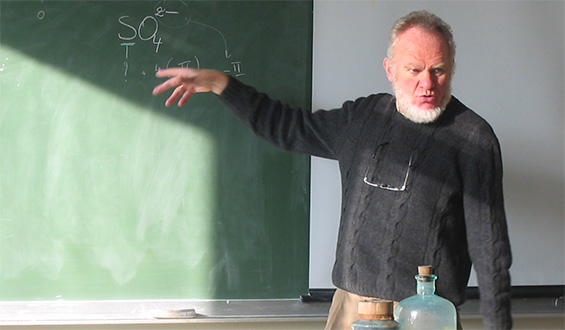Education
Negative Attention from Teachers Encourages Problems, Study Says

A new report from the University of Missouri suggests that students who receive more negative attention from their teachers in turn experience more problems in terms of emotional regulation, concentration and disruptive behaviors.
Previous research has shown the importance of positive student-teacher interactions in order to support behavioral and academic outcomes for students. The new study, performed by researchers at University of Missouri College of Education, introduces a new method for the observation and measurement of teacher interaction with each child in the classroom.
After testing the method on a number of K-3 classrooms, associate professor of educational, school and counseling psychology Wendy Reinke noted that students who had received more negative attention from teachers in turn had a greater number of issues concerning emotional regulation, concentration and disruptive behavior.
In addition, researchers noted that teachers were typically more likely to give negative attention to African-American students, boys, and students who receive free or reduced price lunches.
“Finding an efficient, accurate and consistent way to observe teachers’ interactions with students is important, not only for educational research, but also for evaluating and coaching teachers,” said Reinke, who also is the co-director of the Missouri Prevention Center.
Reinke went on to say that interactions between teachers and students are important because students will model the behavior they see. Therefore, if a teacher offers praise to a student, Reinke said the student will be more likely to perform the same behavior in the future. However, students who receive attention for negative behaviors may also be more likely to repeat those behaviors, especially if it is the only way to obtain attention from a teacher.
The Brief Student-Teacher Classroom Interaction Observation (ST-CIO) model is the observational model developed for the study, which features a five-minute observation developed in order to obtain a quick assessment of teacher interactions. Classroom observers can make use of the model to monitor short student-teacher interactions in an effort to determine whether these interactions are positive or negative. In addition, it is noted that the model ensures the observers will have enough time to note teacher interactions with each student in the classroom, quickly and efficiently.
“We have shown that this method is an effective and efficient tool for researchers,” Reinke said. “However, the method is very simple to practice and could provide principals doing classroom observations or coaches and consultants working with teachers with a tool to observe teachers and give them consistent, valuable feedback.”
Reinke added that the feedback can be used to make teachers aware of their interactions with students in order to help direct teachers toward offering more positive attention to students who they may typically show negative attention on a regular basis.
The report, “The Brief Student-Teacher Classroom Interaction Observation: using Dynamic Indicators of Behaviors in the Classroom to Predict Outcomes and Inform Practice,” was published in Assessment for Effective Intervention. 53 teachers and 896 students in K-3 classrooms were observed.
Author information
The post Negative Attention from Teachers Encourages Problems, Study Says appeared first on Education News.

Comments (0)